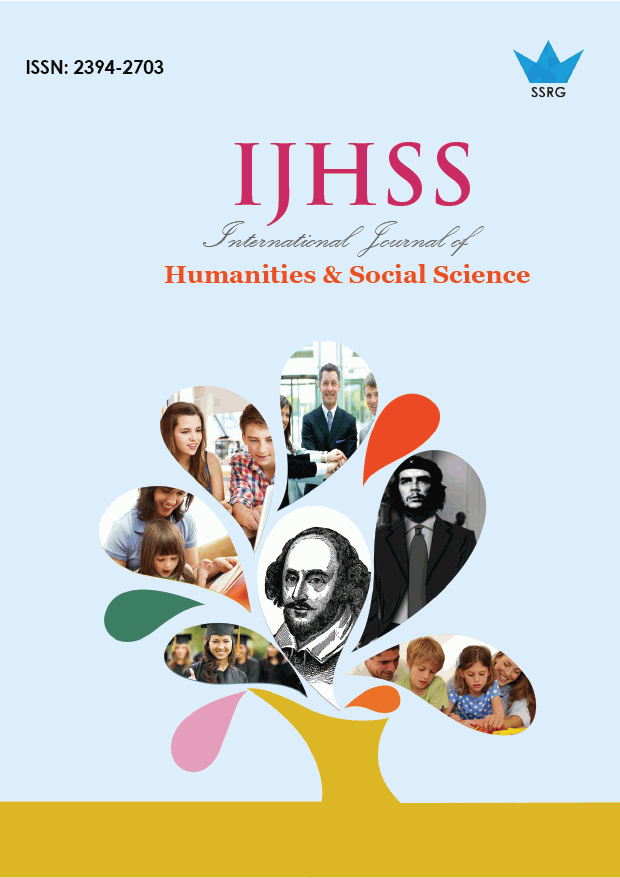Identity and Cultural Conflict in Lorraine Hansberry's

| International Journal of Humanities and Social Science |
| © 2025 by SSRG - IJHSS Journal |
| Volume 12 Issue 3 |
| Year of Publication : 2025 |
| Authors : Abdulhadi Dhiaa Mahdi |
How to Cite?
Abdulhadi Dhiaa Mahdi, "Identity and Cultural Conflict in Lorraine Hansberry's," SSRG International Journal of Humanities and Social Science, vol. 12, no. 3, pp. 44-48, 2025. Crossref, https://doi.org/10.14445/23942703/IJHSS-V12I3P107
Abstract:
This article analyzes Lorraine Hansberry's A Raisin in the Sun, concentrating on themes of self-identity, racial and cultural conflict, and systemic racial bias in 1950s America. The study examines the Younger family's challenges with adversity, intergenerational conflicts, and societal inequity in their pursuit of prosperity and self-identity. This study focuses on the characters of Walter, Beneatha, and Lena (Mama) to demonstrate the intersections and divergences of economic ambition, cultural affirmation, and moral duty. The research demonstrates that Hansberry critiques internal family conflicts and the family's struggle against external racial adversities, the restricted and ethnically confined roles of African Americans, and the significance of human dignity, solidarity, and cultural identity.
Keywords:
African American, Dignity, Cultural conflict, Discrimination, Economic, Gender, Hardship, Hansberry, identity.
References:
[1] Adam Augustyn, George Floyd: American Citizen, Encyclopædia Britannica, 2020. [Online]. Available: https://www.britannica.com/biography/George-Floyd
[2] Homi K. Bhabha, Nation and Narration, Routledge, 2013.
[Google Scholar] [Publisher Link]
[3] James Baldwin, Go Tell It on the Mountain, Alfred A. Knopf, 1953.
[Publisher Link]
[4] C.W.E. Bigsby, Modern American Drama, 1945–2000, Cambridge University Press, 2000.
[Google Scholar] [Publisher Link]
[5] Taylor Branch, Parting the Waters: America in the King Years, 1954–63, Simon &Schuster, Journal of American History, vol. 77, no. 1, pp. 267-268, 1988.
[CrossRef] [Google Scholar] [Publisher Link]
[6] Adam Fairclough, Better Day Coming: Blacks and Equality, 1890–2000, Penguin, vol. 104, no. 3, pp. 210-212, 2003.
[Google Scholar] [Publisher Link]
[7] Michelle Gordon, “‘Somewhat Like War’: The Aesthetics of Segregation, Black Liberation, and A Raisin in the Sun,” African American Review, vol. 42, no. 1, pp. 121-133, 2008.
[Google Scholar] [Publisher Link]
[8] Wilfred L. Guerin, A Handbook of Critical Approaches to Literature, 5th ed., Oxford UP, 2005.
[Google Scholar]
[9] Lorraine Hansberry, A Raisin in the Sun, Random House, 1959.
[Google Scholar] [Publisher Link]
[10] Darlene Clark Hine, William C. Hine, Stanley Harrold, The African-American Odyssey, 6th Ed., Pearson, 2011.
[Google Scholar] [Publisher Link]
[11] Michael J. Klarman, From Jim Crow to Civil Rights: The Supreme Court and the Struggle for Racial Equality, Oxford UP, 2006.
[Google Scholar] [Publisher Link]
[12] Manning Marable, Race, Reform, and Rebellion: The Second Reconstruction in Black America, 1945–2006, University Press of Mississippi, 2007.
[Google Scholar] [Publisher Link]
[13] Richard Rothstein, The Color of Law: A Forgotten History of How Our Government Segregated America, Liveright, 2017.
[Google Scholar] [Publisher Link]
[14] Quintard Taylor, The Forging of a Black Community: Seattle’s Central District from 1870 through the Civil Rights Era. University of Washington Press, 2011.
[Google Scholar] [Publisher Link]
[15] Isabel Wilkerson, The Warmth of Other Suns: The Epic Story of America’s Great Migration, Random House, 2010.
[Google Scholar] [Publisher Link]

 10.14445/23942703/IJHSS-V12I3P107
10.14445/23942703/IJHSS-V12I3P107